Edoardo Malagigi
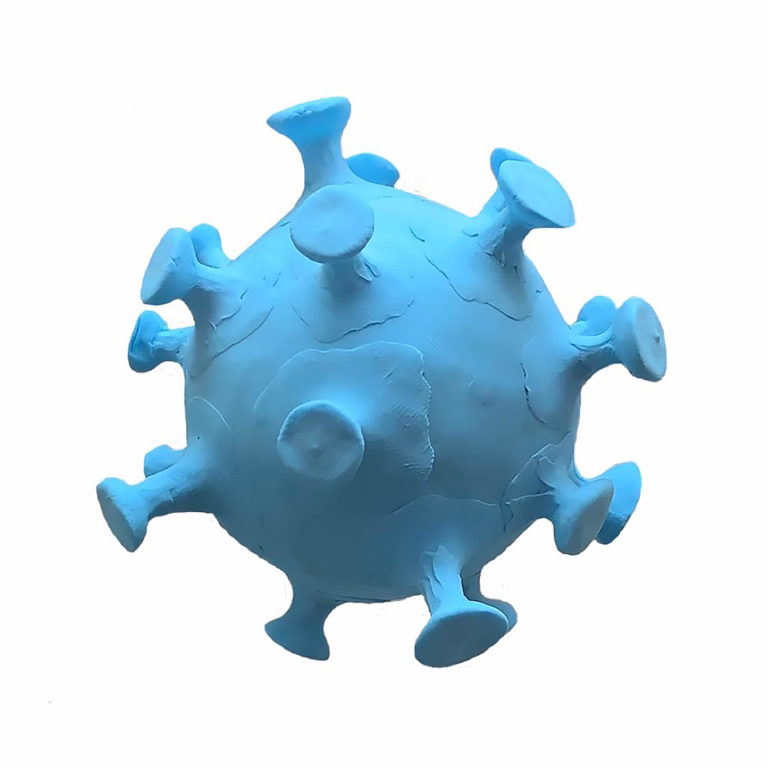
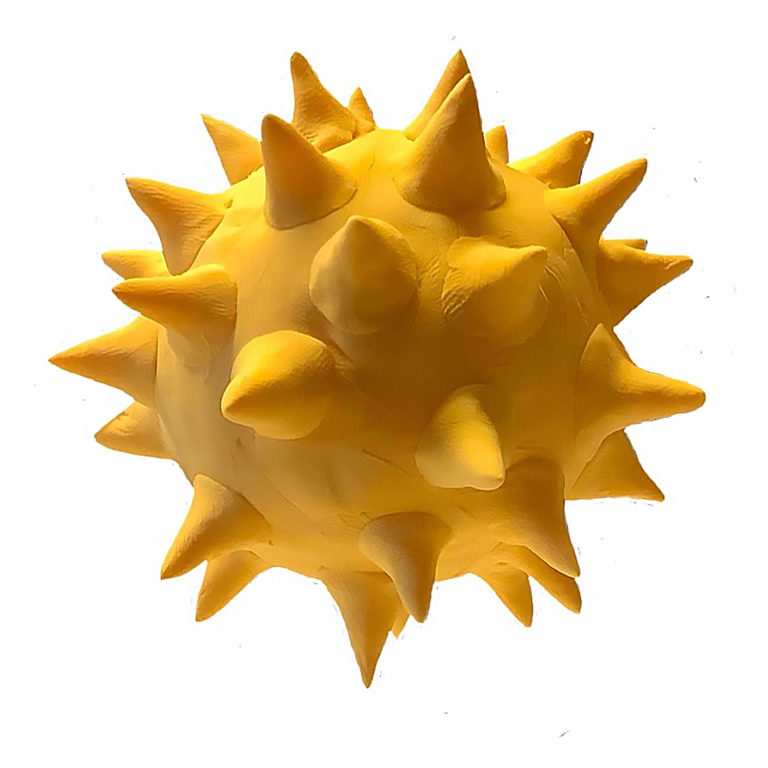
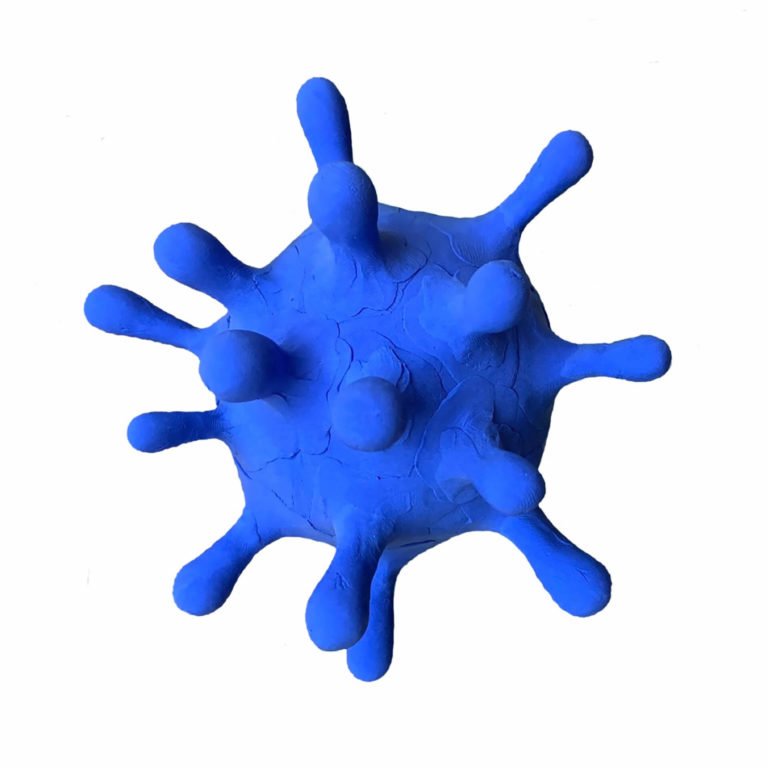
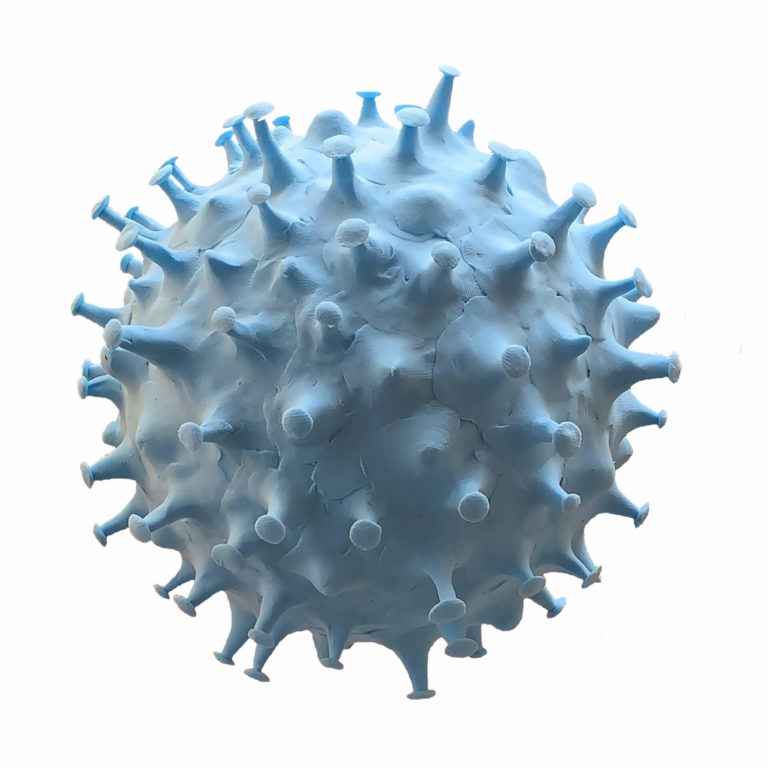
病毒Virus
新冠病毒被描绘成一种物质的爆炸,一种从中心向外扩散的能量,一种向前推进的力量,并向外部辐射光线。
在自然界中,所有的植物和花朵在在诞生之初都有类似的行为,从而产生它们的美。新冠病毒以及随后几代病毒可能也有其自身的美学特质,就如同地球未来的花朵一样。
我们必须回溯与地球和自然的关系。新冠病毒告诉我们,我们做了很多错事,即便与科学建立真正的关系能使我们重新征服自然和土地。为什么不与病毒建立一种机密的关系,把它当做一场游戏呢?
(制作方法:彩色橡皮泥模型)
Coronavirus is depicted like an explosion of matter, an energy that goes outwards from the centre, a force that pushes forward, radiating towards an external light.
In nature, all plants and flowers do something similar when they are born, thus giving rise to their beauty.This virus and the generations of other viruses that will follow may also have their own aesthetic qualities, like Earth’s future flowers.
We must return to a relationship with our Earth and with nature. Coronavirus tells us that we have done many things wrong, even a true relationship with science would help us to reconquer nature and our land. Why not enter into a confidential relationship with viruses and make them a game?
(technique: modelled coloured plastiline)
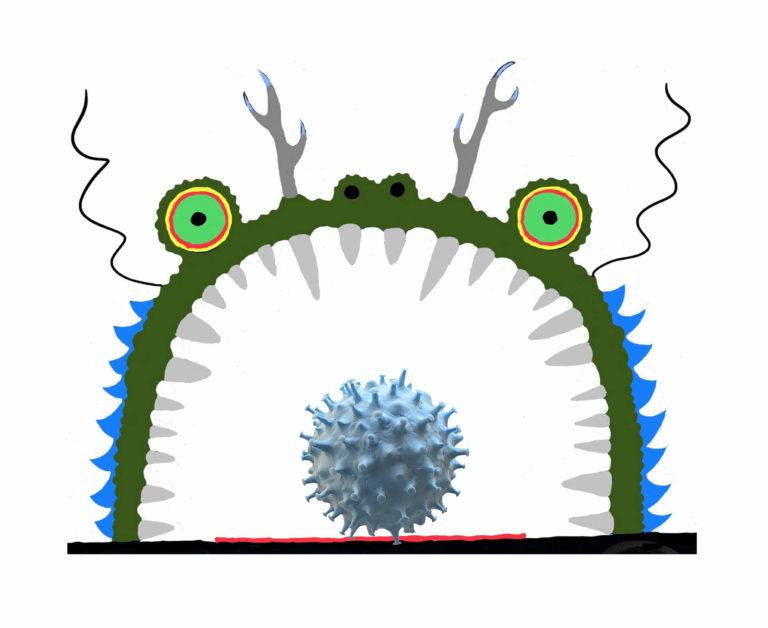
消灭病毒的巨龙The dragon that destroys the virus
传统中描绘的中国龙,具有真实动物的外貌:鲶鱼的胡子;鳄鱼的眼睛、皮肤和鼻子;蛇的舌头;狮子的鬃毛;鹿的鹿角。善良的龙帮助我们消灭邪恶的病毒。面对一个陌生的邪恶势力,人们需要英雄的帮助,即使这个英雄是虚构的和非物质的。
(制作方法:基于光的彩色iPad绘制)
A Chinese dragon, depicted traditionally, with the appearance of real animals: a catfish’ moustache; a crocodile’s eyes, skin and nose; a snake’s tongue; a lion’s mane; a deer’s antlers. The good dragon helps us to destroy bad viruses.
Confronted by a strange evil, people need to get help from a hero, even if this hero is imaginary and immaterial.
(technique: light based coloured Ipad drawing)
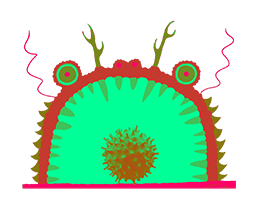
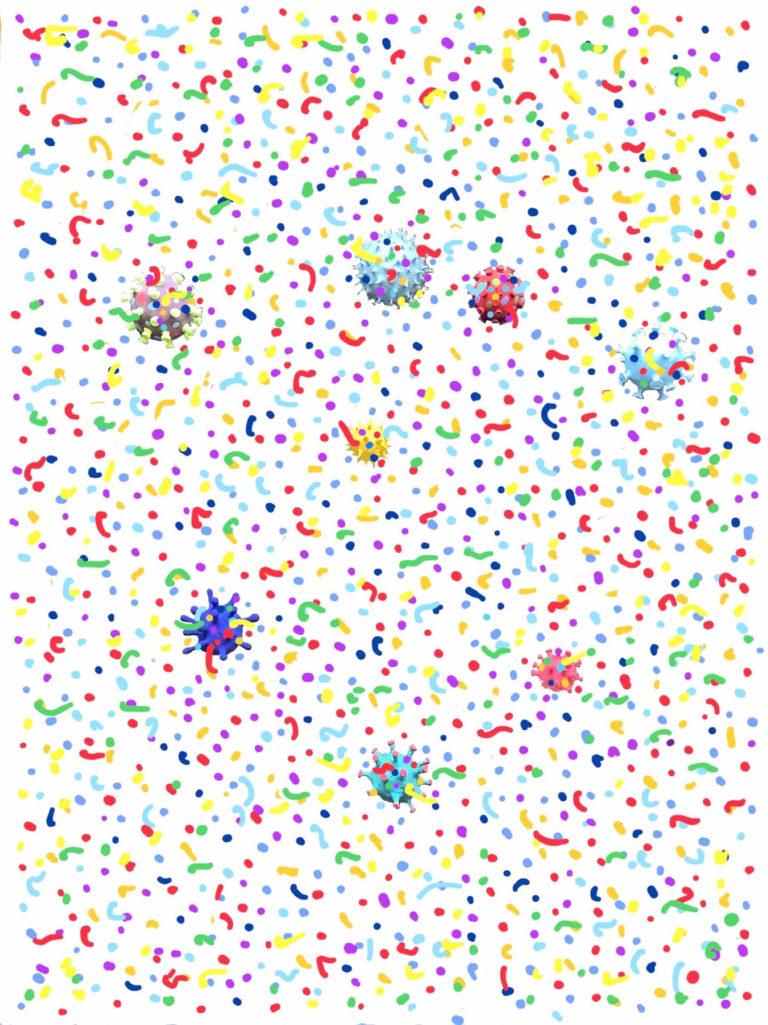
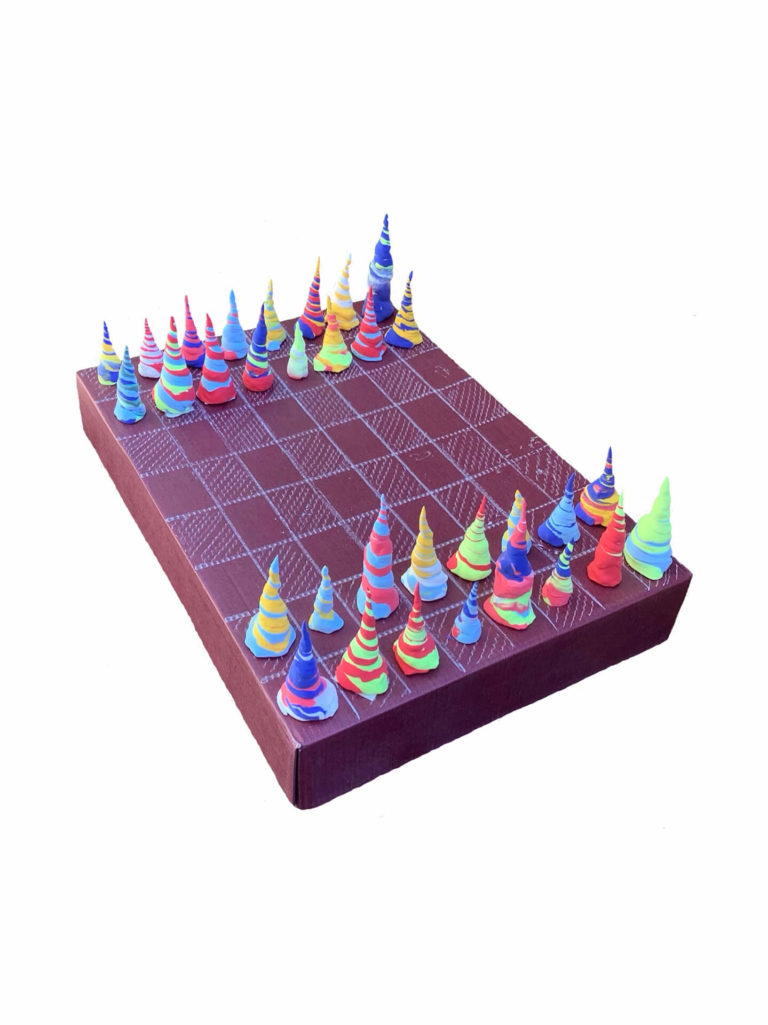

反讽的运用Use of irony
病毒如雨点般落下
我们需要提高意识,认识到人的呼吸和风中的飞沫就在我们周围。
每一天都是反抗的一天
我们要用每一分每一秒的时间来保护自己,这将是一个强大的日常抵抗。当然,要使用正确的工具。
将死病毒
要战胜新冠病毒,我们不能使用过去的规则,就像在有精确规则的国际象棋中那样,如果兵、国王和王后的形状无法辨认,就没有人玩。一种具有讽刺意味的看待事物的观点,促使我们反思在当下为未来制定新规则的必要性。棋子之间只有审美差别,而无输赢之分。
(制作方法:基于光的彩色iPad绘制)
It’s raining viruses
We need to improve awareness of the fact that the droplets in the breath of people and in the wind are all around us.
Every day is a day of resistance
We have to spend every second, every minute of our time protecting ourselves, it will be a strong daily resistance. With the right tools.
Checkmate to the virus
To defeat the coronavirus we cannot use the rules of the past, as in the game of chess which has precise rules; no one plays if the shape of pawns, kings and queens are unrecognizable. An ironic view of things invites us to reflect on the need to give us new rules for the future today. The difference between chess pieces is only aesthetic, therefore there are no losers or winners between the contenders.
(technique: light based coloured Ipad drawing)
在艺术品中找到意义
Finding meaning in the artwork
消灭病毒的巨龙
奚践诺
爱德华·马拉齐齐(Edoardo Malagigi)这次参展的作品包括三个主题:消灭病毒的龙、病毒和反讽的运用。通过这些极具象征意义但又有趣的嬉戏创作,这位意大利艺术家构建了我们抗击新冠病毒(COVID-19)的视觉图像。人们应该注意到,它们不仅反映了新冠肺炎破坏性的一面,而且还反映了爆发之后的深刻变革所释放出的创造性的可能:它们不仅是人类可以赢得战争的希望的代表,也是这一刻我们一起实现相互联系的象征。
在《消灭病毒的巨龙》这幅作品中,一条传统的中国龙正在吞噬冠状病毒:这个神秘的生物,难以穿透的鳞片闪着深绿色的光,它怒目圆睁,张开血盆大口,病毒即将被这头凶恶的野兽的利齿碾碎,然后被吞入腹中。画面空间里有一种含蓄内敛的紧张感,某种行动的预期感仍被搁置——因为我们与病毒的斗争尚未取得胜利。
“人们正在寻找一种银色的子弹,一种神奇的装置,从而帮助他们摆脱这个恶魔”
形式上,艺术家巧妙地将两种对立的方式整合到图像空间中。在创造龙的形象时,Malagigi 利用了图形的平面表达的可能性。这反过来又在重要意义上唤起了米罗(Joan Miro)作品中近乎幼稚和梦幻的气氛。龙,Malagigi 认为,只是一个梦,一个超级英雄,其实并不存在。相反,病毒通过一种橡皮泥模型而不是一幅画来强化它的三维存在。坚固性带来存在感,就好像病毒真的漂浮在龙的嘴里。这种冲突给画面带来了张力,并在这两个元素之间创造了不可简化的视觉存在平面:我们只是在看一个童话故事。
实际上,我们很难忽视这部作品的象征意义。虽然梳理了一些真实动物的特征,但龙是一种不存在的生物。人们面对着一种异常而强大的恶魔,疫情开始之前人们一直生活的世界被病毒关在其中。人们正在寻找一种银色的子弹,一种神奇的装置,从而帮助他们摆脱这个恶魔。
就像一个现代的小丑,Malagigi 以最简单的方式揭露了国王的新装。技术革命、大规模生产和旅行的奇迹,以及互联网的兴起,都没有保护我们免受这一责任重大的悲剧。恰恰相反,它们在很大程度上要为这种比例的疫情的存在负责。在艺术家的作品中,雨伞保护我们不受病毒的侵害——一种简单可靠又常见物品。也许是时候回顾一个更简单的世界,一种更简单的生活方式,作为重新创造我们未来的策略。
The Dragon that Destroys the Virus
By Xi Jiannuo
Edoardo Malagigi’s oeuvre for this exhibition includes three main series: The dragon that destroys the virus, Virus, and The Use of Irony. Through these creations, highly symbolic and yet interestingly playful, the Italian artist constructs a visual imagery of our fight against the Covid-19. They are a reflection not only on the destructive side of the pandemic, one should notice, but also on the creative possibilities that the deep transformations that have followed the outbreak have unleashed: They are hopeful representations not only of a war that humans can win, but of a moment where we can come together to realize our interconnectedness.
In The dragon that destroys the virus, a traditional Chinese dragon is devouring the virus. The mythical creature, whose impenetrable scales are of a dark green, has eyes wide open. Its mouth is stretched to its full extension: The virus is about to get crashed by the beast’s menacing teeth and then swallowed. There is an implicit tension in the picture, some kind of anticipatory sense of movement that remains yet suspended – as our fight against the virus is yet to be won.
“We are just like chess pieces in a game where there are no special roles: We are all the same – and so we are in front of the virus”
Formally, the artist skillfully integrates two opposite approaches to the pictorial space. In creating the figure of the dragon, Malagigi exploits the expressive possibilities of the pictorial flatness. This in turn evokes in important senses the almost childish and dream-like atmospheres of Joan Miro’s works. The dragon, Malagigi suggests, is just a dream, a superhero, that really doesn’t exist. The virus, instead, imposes its three-dimensional presence by being, rather than a drawing, a plasticine model. Its solidity gives presence to the virus, as if it were real in its floating inside the dragon’s mouth. This conflict brings tension into the picture, and creates irreducible planes of visual existence between these two elements: We’re just looking at a fairy tale.
It is hard, in effect to ignore the symbolism of the work. While combing some features of real animals, a dragon is a nonexistent creature. In facing an unusual and all powerful evil, a virus that has shuttered the world wherein which we have been living until the beginning of the pandemic, people are looking for a silver-bullet, a somewhat magical device that could help them get rid of this villain: They need a hero, but this hero is just imaginary and immaterial. The truth, Malagigi tells us in The Use of Irony, is much more mundane. We are just like chess pieces in a game where there are no special roles: We are all the same – and so we are in front of the virus.
Just like a modern jester, Malagigi reveals in the simplest of fashion that “the king is naked.” The technological revolution, the miracles of mass production and travel, and the rise of the internet have not protect us from this incumbent tragedy. Quite the opposite, they are largely responsible for the conditions that allow the very existence of a pandemic of this proportion. In his work, an umbrella is protecting us from the virus – a commonplace object that is as simple as reliable. It is perhaps time to look back at a simpler world, at simpler ways of living, as a strategy to reinvent our future.
Edoardo Malagigi
他在布莱顿,普拉,佛罗伦萨,贝尔格莱德,莫迪卡,东京,北京,热那亚,布加勒斯特,冲绳,南京,卢加诺,米兰,基金达创建了特定地点的作品。他一直是阿富汗当代艺术中心(CCAA)的“顾问委员会成员”。
他曾在以下地区举行过关于艺术/设计关系的研讨会和会议:蒙斯特,青岛,哈瓦那,成都,卢加诺,重庆,首尔,杭州,里斯本,上海,波士顿,弗莱堡,佛罗伦萨,南京,泰恩河畔纽卡斯尔,北京,贝尔格莱德,索非亚,喀布尔,北京,普里什蒂纳,武汉,罗马,东京,那霸,开罗,威尼斯,塞蒂纳,米兰,第比利斯,马德里。
他的装置和作品曾在以下展览中展出:罗马四年展、巴里艺术博览会、威尼斯双年展、博洛尼亚市政现代美术馆、米兰三年展、费拉拉的迪亚曼蒂宫、普拉托的路易吉·佩奇当代艺术中心、佛罗伦萨的当代艺术馆、柏林的阿巴科空间当代艺术,1865年在南京。
直到 2015年为止,他一直是佛罗伦萨美术学院的教授,并从 1987年开始担任学院的 Erasmus 项目的发起人。
He has created site specific works in Brighton, Pula, Florence, Belgrade, Modica, Tokyo, Beijing, Genoa, Bucharest, Okinawa, Nanjing, Lugano, Milan, Kikinda. He has been “Member of the Advisory Board” of the Center for Contemporary Art of Afghanistan (CCAA).
He has held workshops and conferences on the art / design relationship in: Munster, Qingdao, Havana, Chengdu, Lugano, Chongqing, Seoul, Hangzhou, Lisbon, Shanghai, Boston, Freiburg, Florence, Nanjing, Newcastle upon Tyne, Beijing, Belgrade, Sofia, Kabul, Beijing, Priština, Wuhan, Rome, Tokyo, Naha, Cairo, Venice, Cetine, Milan, Tbilisi, Madrid.
His installations and works have been presented in exhibitions such as: Rome Quadrennial, Bari Art Expo, Venice Biennial, Bologna Municipal Modern Art Gallery, Milan Triennial, Palazzo dei Diamanti in Ferrara, Luigi Pecci Contemporary Art Center in Prato, Sensus Arte Contemporanea of Florence, Abaco Space Contemporary Art of Berlin, 1865 in Nanchino.
He has been a professor at the Academy of Fine Arts in Florence until 2015 and initiator of Erasmus projects in the same Academy since 1987.